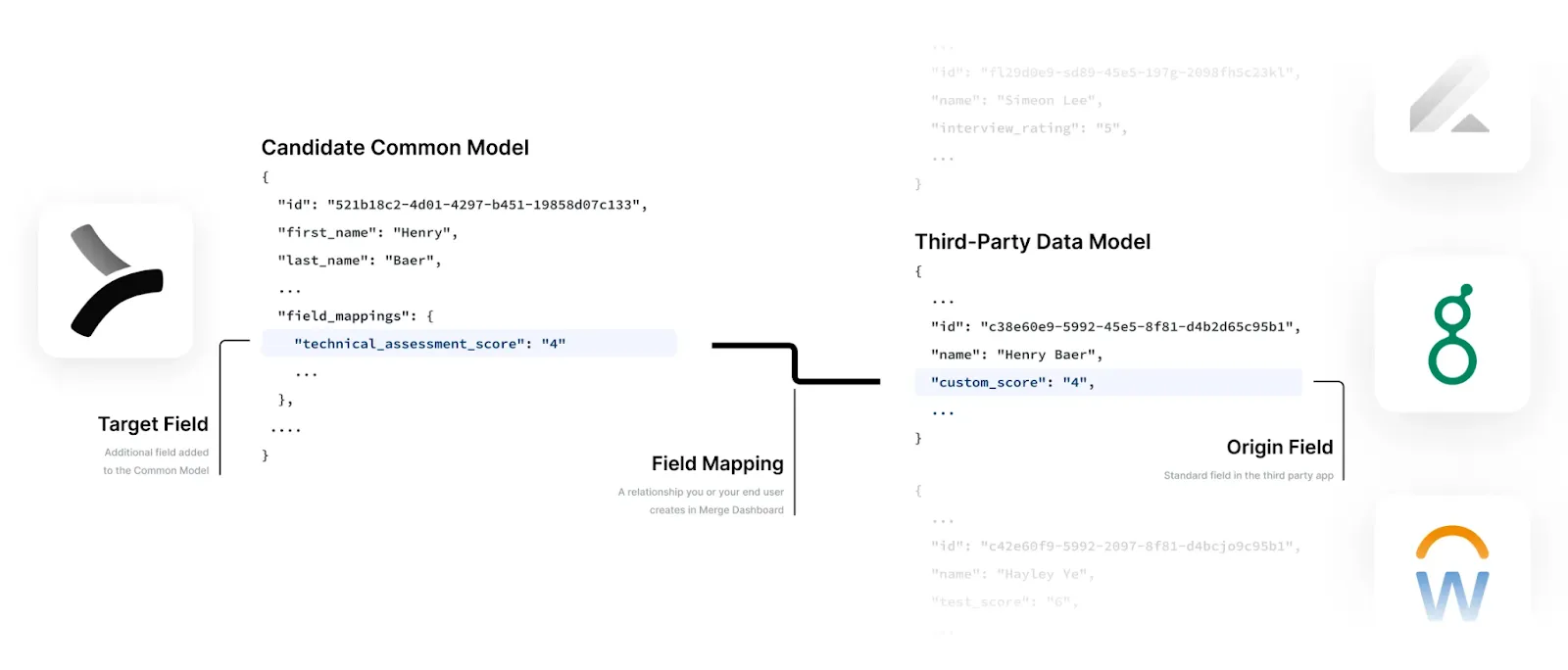6 Codat alternatives worth considering in 2025

If you're reading this article, you're likely considering Codat, an integration platform that lets you connect to customers’ financial applications.
Before moving forward with them, you should consider other solutions that offer similar integrations, along with additional features and capabilities.
To that end, here’s a breakdown of several alternatives to Codat.
Note: This article was written on 6/7/2024. All of the information presented below is subject to change in the future.
Merge
Merge, the leading unified API platform, lets you add hundreds of integrations across software categories—from accounting to CRM to HRIS to ATS to file storage—from a single integration build.

Top features
- Comprehensive Common Models: Merge normalizes the data that’s synced from end-users’ applications according to Merge's Common Models. These Common Models cover the data in each software category , ensuring they meet customers’ syncing requirements
- Integration observability tooling: Your customer-facing teams can use Merge to identify and diagnose integration issues and work with customers on resolving them
- Advanced syncing features: Merge offers several features—like Field Mapping and Authenticated Passthrough Request— that can help you access and sync custom objects and fields

Related: A guide on Codat's pricing
When to choose Merge over Codat
- Your customers have unique syncing requirements. Codat doesn’t support features that let you access data outside of their normalized data models—while Merge does. As a result, if you expect customers to have individualized syncing needs, it’s in your best interest to use Merge
- You need to integrate with software that spans a range of categories. Codat is confined to finance APIs, so if you need to integrate with other types of systems you’ll either need to build the connections yourself or identify another 3rd-party tool that can help. Since Merge covers financial APIs and many others, it can serve as your one-stop shop for adding product integrations
- You need to POST invoices to customers' financial applications. Codat doesn’t support this use case—while Merge does
{{this-blog-only-cta}}
Workato
Workato offers a variety of integration and automation solutions, including an embedded iPaaS that lets you add integrations to your product.
Top features
- More than a thousand pre-built application connectors: These connectors cover several categories—from CRM to HRIS to sales to marketing software—allowing you to build a variety of integrations faster
- Countless automation templates: These automation templates, which are provided by other users, Workato’s team, and partners, help users ideate and implement automations
- Bringing automations to your business communications platform: Workbot®, a custom platform bot for Slack and Microsoft Teams, lets your employees take actions from and receive insights in their business comms platform

When to choose Workato over Codat
- You also need to support internal integrations. Workato’s platform is purpose built to support internal integration and automation use cases, so if that’s as big, if not more, of a priority for your business, it may be worth exploring Workato further
- You need to support integrations across software categories. Workato, unlike Codat, lets you integrate your product with different categories of software
- You’re looking for comprehensive customer proof points. Workato has a richer set of customer case studies than Codat and significantly more reviews on 3rd-party review sites, like G2
Related: Alternative solutions to Workato
Apideck
Apideck lets you add integrations across software categories, including accounting, through their unified APIs.
Top features
- Unified APIs for CRM, HRIS, and accounting systems: You can integrate with dozens of applications within these categories
- Advanced mapping tools: You can use Apideck to sync custom fields and objects across their unified APIs
- Adding and maintaining an integration marketplace: Apideck lets you create and manage an integrations marketplace, where visitors can learn about and access specific integrations from your site

When to choose Apideck over Codat
- You also need to support CRM and HRIS integrations. Your prospects and customers will, if not already, start asking for specific integrations in these categories, and Apideck can help you add them
- You need to access custom data. Apideck offers features that can help you retrieve and sync unique fields and objects while Codat limits you to the data covered in their normalized data models
- You want to add an integrations marketplace. If you don’t have enough developer resources to assist in building and maintaining this page, Apideck’s solution may prove helpful
Related: Top alternatives to Apideck
Rutter
Rutter offers a unified API for B2B financial products, making the platform extremely similar to Codat.
Top features
- A unified API for financial applications: You can integrate with 27 applications that span commerce, payments, ads, and accounting software
- Monitoring tooling: Rutter provides several logs—webhook logs, request logs, and connection logs—to help you oversee your integrations’ health

When to choose Rutter over Codat
- You want to monitor your integrations over time. Rutter offers more comprehensive observability capabilities than Codat, which can help your team troubleshoot integration issues faster and provide healthier integrations throughout their lifespans
- You need to add specific finance integrations that Codat doesn’t support. This includes applications like Magento, Shoplazza, and Maxio
Related: The top alternatives to Rutter
Plaid
Plaid allows companies to connect to their customers’ financial accounts securely and easily through their API.
Top features
- Depth of support: Lets customers access more than 12,000 financial institutions
- Breadth of support: Integrates with many different types of financial solutions, including lending solutions, personal finance tools, and investment platforms
- Customer experience: Offers seamless authentication and authorization flows for consumers

When to choose Plaid over Codat
- You need to offer a B2B2C solution. In other words, your customers work with individuals, not businesses
- You need to offer integrations that are proven to work at scale. As more customers adopt your integrations, new edge cases can get introduced that break your integrations. Since Plaid has been in the market significantly longer than Codat and supports many more customers, they’ve likely seen many more edge cases and have addressed them—making their integrations more resilient
- You want to work with a more established company. Plaid has been around several more years than Codat, which, among other signals, can make Plaid feel like a less risky investment
Zapier
Zapier is an automation tool that helps companies build “zaps”, or task-based automations between internal applications. And while the tool is purpose-built for internal integrations, you can also try using it for customer-facing integrations.
Top features
- App connectors: Offers more than 7,000 app connectors across software categories to help you build integrations faster
- Zap builder: Create trigger-based automations that work across your applications via a low-code/no-code UI
- Template library: Access templates that can help you create more powerful solutions, like AI-powered chatbots or online courses
When to choose Zapier over Codat
- You’re primarily focused on building internal integrations. Unlike Codat, Zapier can effectively support your internal integration needs at scale
- You’re looking to integrate with more than financial applications. Zapier lets you integrate with seemingly every type of application, from business communications platforms like Slack to marketing automation platforms like Mailchimp
- You don’t want engineers working on integration and automation projects. Zapier doesn’t require technical expertise to use, letting you task employees outside of engineering (e.g., ops teams) with building and maintaining Zaps
Related: Kombo's top competitors
Final thoughts
If you only need to add integrations with financial applications and sync the fields that Codat’s common models cover, it may be worth investing in the platform.
However, your business’ integration needs likely extend beyond this.
We built Merge with the idea that B2B SaaS companies need to add highly-flexible, observable, cross-category integrations to their product.
If this vision aligns with your team and you’d like to see how Merge can help you improve your integration strategy, development, and maintenance, you can schedule a demo with one of our integration experts.







.jpg)
